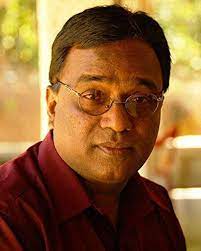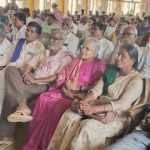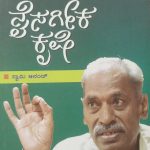On a metaphorical mode-NATARAJ HULIYAR
[Review of Devanuru Mahadeva’s ‘Edege bidda akshara’ by Nataraj Huliyar in ‘The Hindu’ on February 01, 2013. ನಟರಾಜ್ ಹುಳಿಯಾರ್ ಅವರು ದೇವನೂರು ಮಹಾದೇವ ಅವರ ‘ಎದೆಗೆ ಬಿದ್ದ ಅಕ್ಷರ’ ಕುರಿತು ಮಾಡಿದ ವಿಮರ್ಶೆಯು, ಫೆಬ್ರವರಿ 01, 2013ರಂದು ‘ದಿ ಹಿಂದೂ’ ಪತ್ರಿಕೆಯಲ್ಲಿ ಪ್ರಕಟವಾಗಿದೆ.]
( Devanoor Mahadeva’s latest work, Edege Bidda Akshara, has stirred up the Kannada literary world. The writer achieves a fine synthesis of rhythm, story-telling technique and an introspective analysis)
A few decades ago, Devanoor Mahadeva tread a distinct path in narrating his stories and also handling his themes in his collection Dyavanooru. He later achieved a rare perfection of this narrative in his novel Kusumabaale where he brought new legitimacy to the nuances of the rural dialect which has artistically evolved into a literary language. His fiction also shaped the course of Kannada Dalit literature and was instrumental in releasing the creative energy of several Kannada writers from rural Karnataka.
His latest prose work, Edege BiddaAkshara achieves a fine synthesis of rhythm, story telling technique and an introspective analysis. The readers feel that they are listening to the sincere voice of a genius. The author’s reflections flow into the structure of an essay but they defy the rules of the essay form. In Devanoor’s entire literature, speech and writing, the binary opposites, merge naturally and artistically into one another. Even in his polemical discourse, he never lets go of his introspective mode through which he hesitantly reaches his judgment. He is progressive and socialist in his outlook, but avoids the clichés of the progressive discourse.
The title Edege Bidda Akshara is chosen from an epigraph he wrote for the literacy campaign: Bhoomige Bidda Beeja /Edege BiddaAkshara/indalla naale phala koduvudu . (The seed that falls on the earth/ The letter that falls into the heart/ will bear fruit, if not today, tomorrow.) He has written pamphlets of historical significance for the dalit movement in Karnataka. The narratives in the book include his speeches, literary perspectives, his solutions to social maladies, a shy leader’s cautious advice to social movements and his responses at crucial junctures of a society. They also voice the collective aspirations of the marginalised.
That the narratives have also evolved as a part of his activist interventions make them much more significant in the socio-cultural context of India. Devanoor is one of the founders of the Dalita Sangharsha Samithi (DSS) in Karnataka and has guided and shaped its concerns. He has cautioned the movement whenever it deviated from its path and is not hesitant to take unpopular stance. When Richard Attenborough’s film Gandhi was released in India, DSS instructed its members not to watch the film since Ambedkar was not represented in the film. Devanoor watched the film albeit ‘stealthily’, and wrote a moving account of his experience in ‘ Naanu Gandhi Chitra Nodide ’ (I watched the film, Gandhi .) He gave a wonderful account of Gandhi in a line: ‘Gandhi’s spirit is like that of the earth which does not stop even for a moment.’ So he advises the dalit movement: ‘We have to look for thousand ways for our liberation. And Gandhi could show us a direction.’
Devanoor attempts an excellent metaphorical description of the progressive family of modern India: ‘Gandhi is like a stern father; Jayaparakash Narayan a helpless mother; Vinoba Bhave, the unmarried elder sister; Lohia, the itinerant son who never comes home, and Ambedkar is the son angered by discrimination, and has stayed away from home. This is our family and we the children. If not like this, how else does one have to see it?”
Thanks to Devanoor’s introspective mode, which is all pervasive in the book, Dalit movement in Karnataka has a broader base and is more inclusive compared to the Dalit movements in the other parts of India. When Dalits were divided over internal reservation, Devanoor invoked the ‘gandabherunda’ (an imaginary bird with two heads) metaphor and cautioned that the disunity would cause the death of both the factions. He is among the first to have dreamt of a joint forum of the Dalit movement and the farmers movement in Karnataka. He discusses it in his interview with M.D. Nanjundaswamy, the great farmer leader and socialist intellectual. Devanoor did realise this dream much later when he brought the factions of Raita Sangha and DSS together to form a political party with a socialist outlook.
A writer of rare integrity, Devanoor’s literary judgments too are quite significant. His intimate reading of Raghavendra Khasaneesa’s stories; his reverence for Lankesh’s anti-establishment struggle; his choice of Kuvempu’s novel Malegalalli Madumagalu as ‘the novel of the 20{+t}{+h}century’ are worth noting. His interventions during many crises in Karnataka, may it be the closure of government schools or introduction of English in government schools, have influenced the public opinion to a considerable extent.
Similarly, his criticism of the communal forces, his perception of the threats posed by the extra constitutional authorities, his redefinition of reservation in the era of privatisation are very significant. Even when he attacks those who perpetuate communalism and casteism, the tone of his sane approach should lead them to introspect and feel ashamed of their evil designs. Hence, one feels that the book may as well inaugurate the beginning of a new kind of cultural discourse in the Kannada context. That this book has run into the third edition within a month and is discussed very seriously among different sections of readers is an indication of the yearning Kannada culture has for a healthy vision at this point in time. It also gives us an assurance that the optimism reflected in the title of the book is not too unrealistic.








